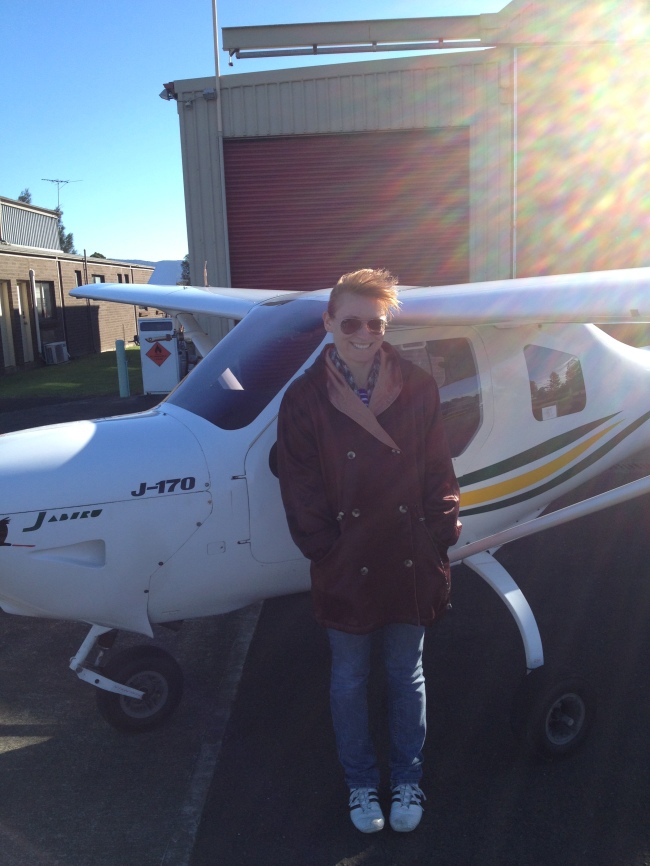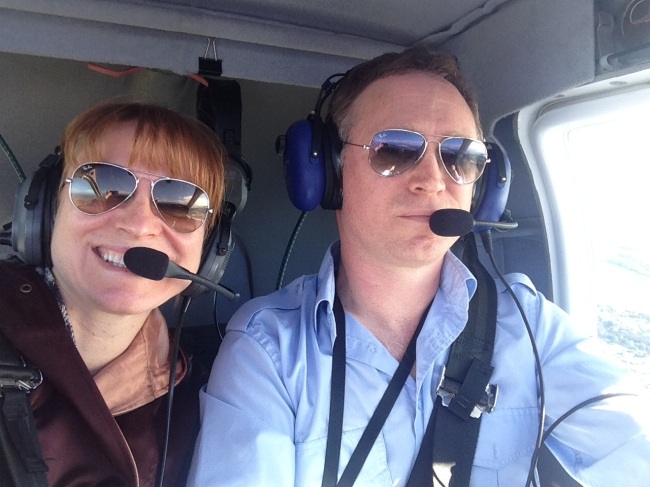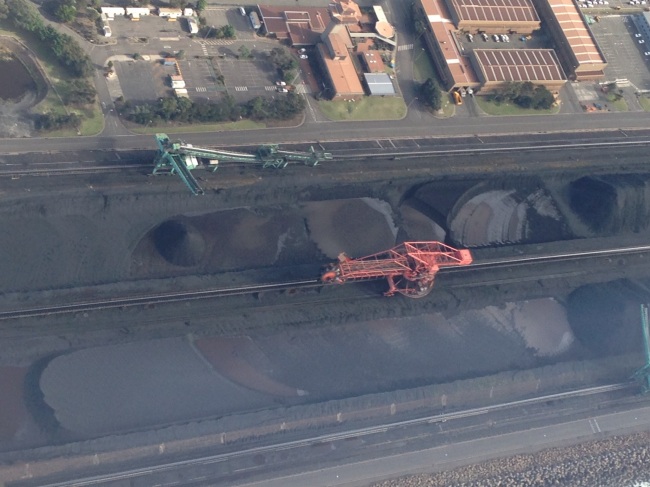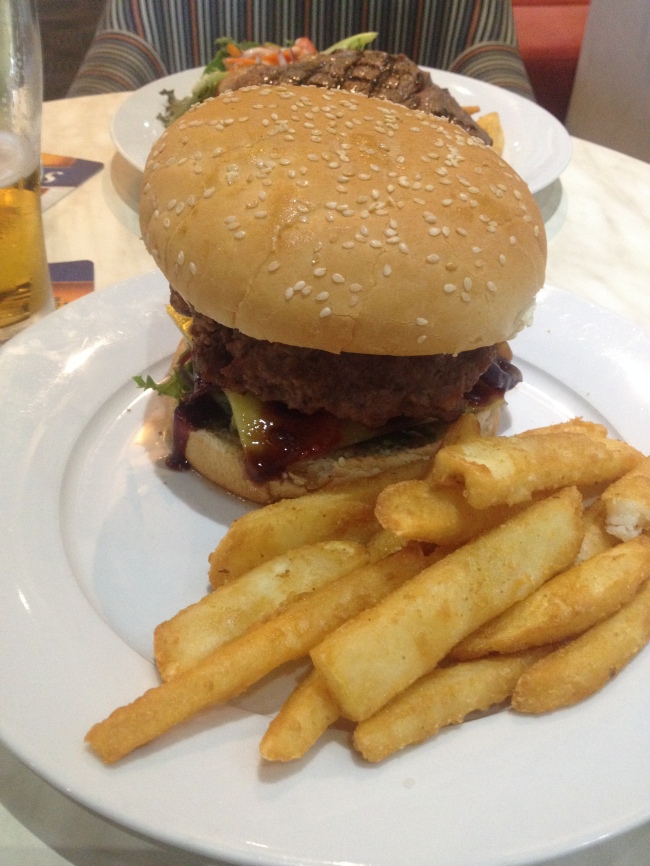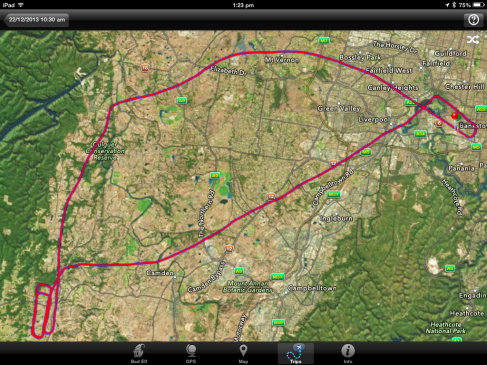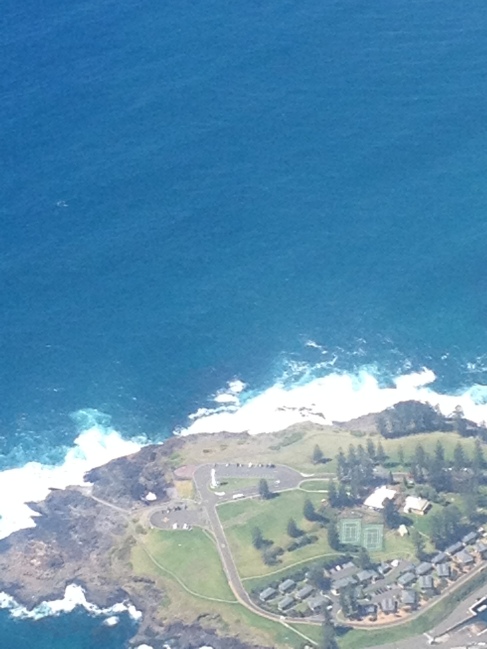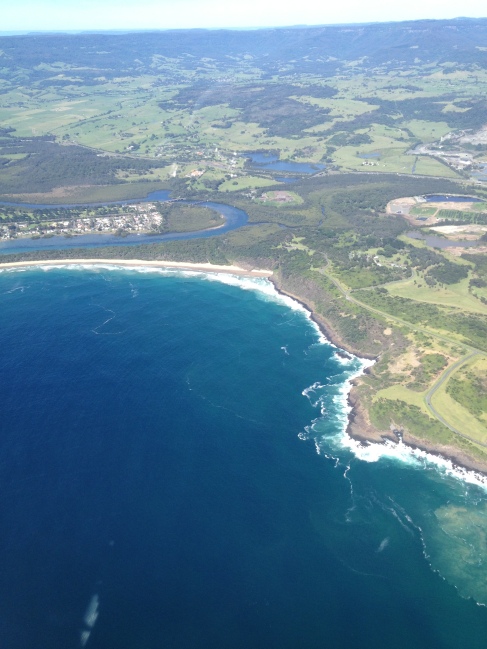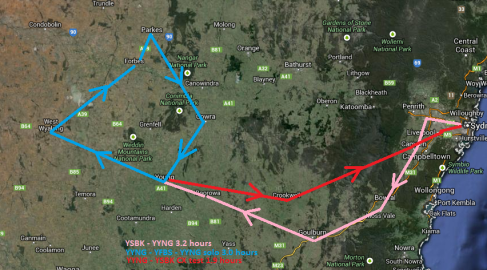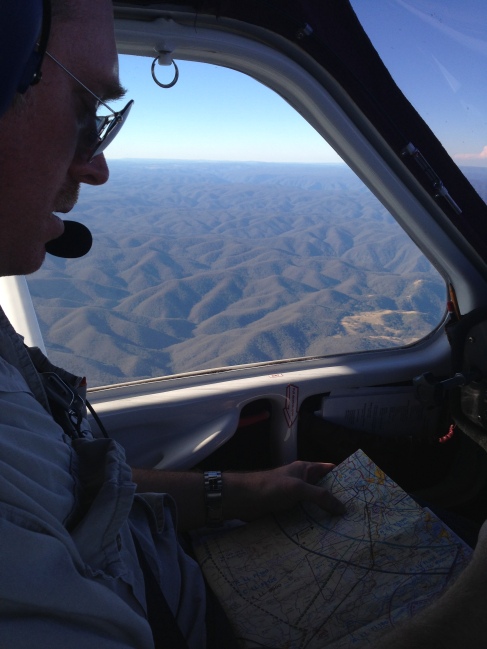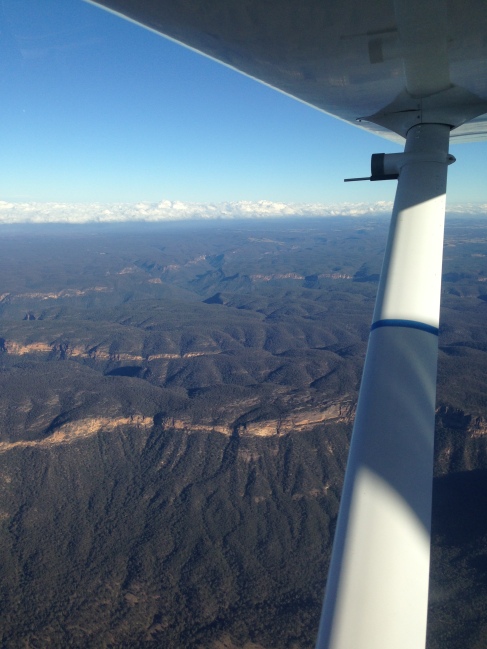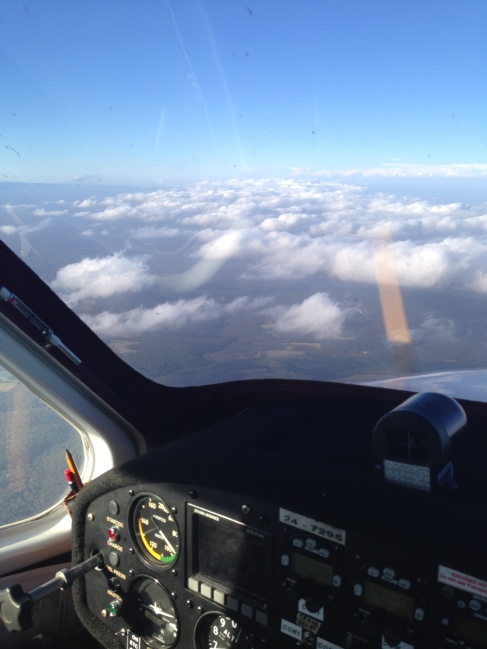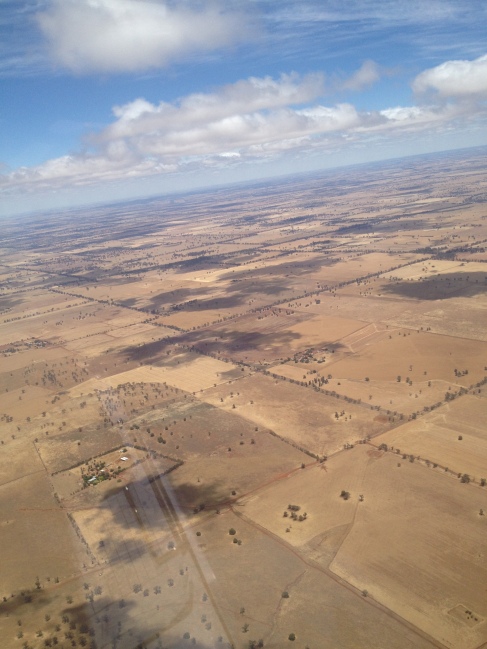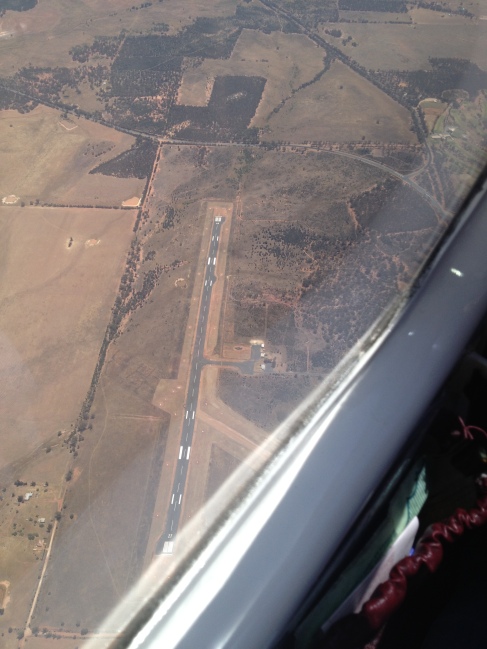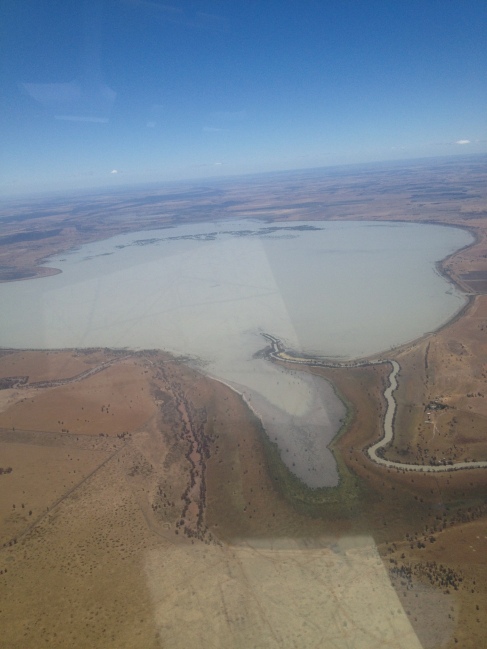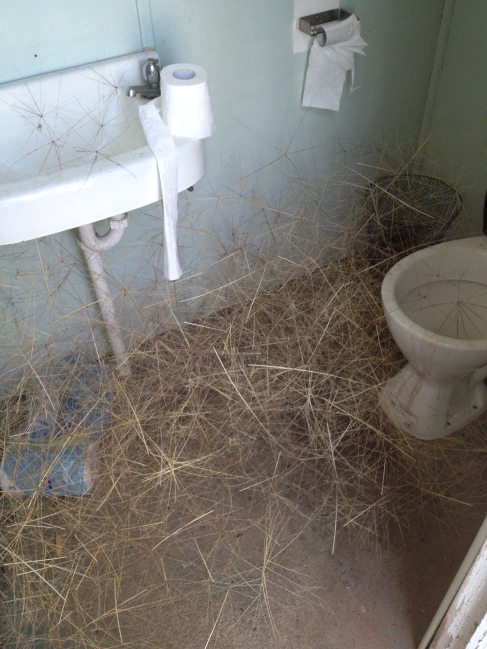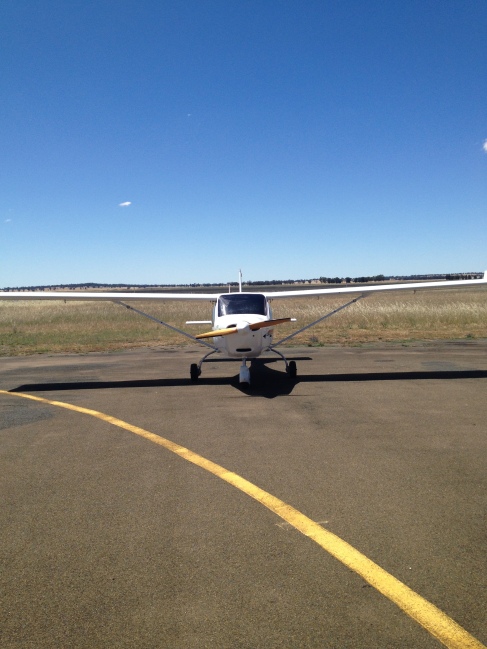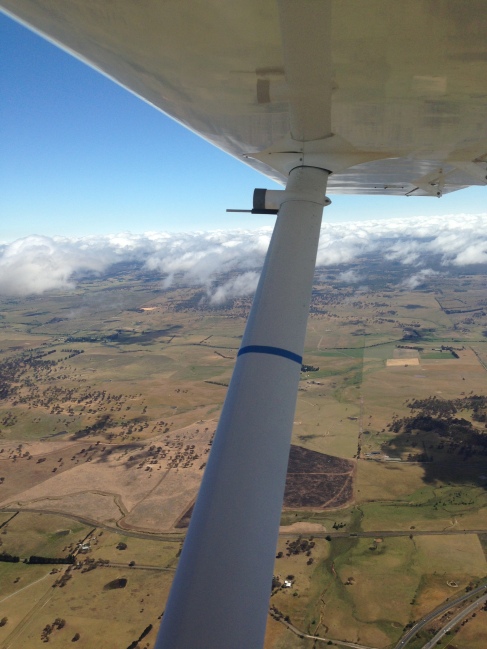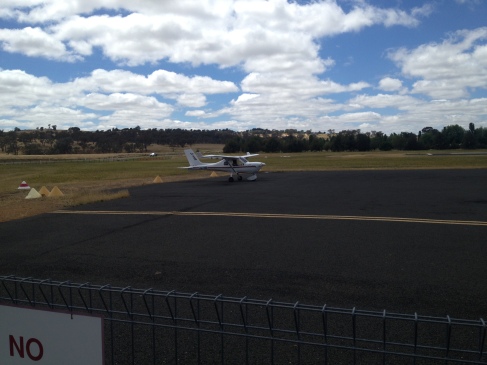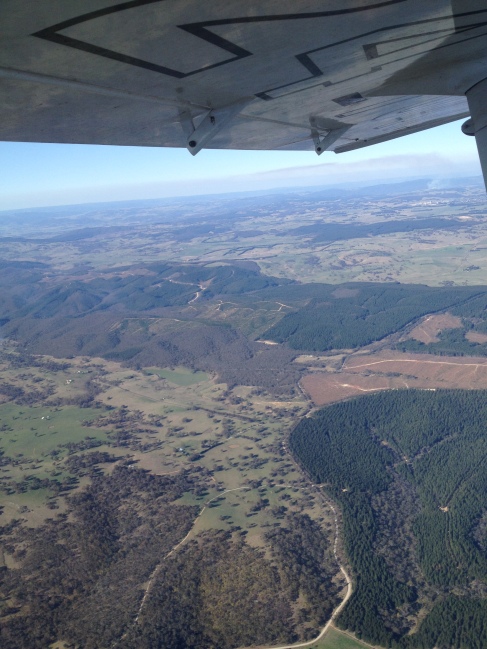Well, my luck has continued with unbelievably clear calm weather – always a welcome circumstance when I have a lesson planned, doubly so when I am learning new concepts. This weekend, I finished up the remaining items in the Cross Country endorsement syllabus – Low Level Navigation and Diversions.
I arrived on Sunday at 11:00 for a 12:00 flight to get the weather and finish my flight plan and chart preparation. Brett arrived around 12:00 with the previous student, but since I am the last student of the day there was no particular hurry. He called for fuel and nuked his lunch while I worked out all of my headings, ground speeds, time and fuel calculations and generally got myself organised.
I performed the usual preflight inspection, my ritual of calm where I start getting in the zone. I did note that it is close to due for its 100-hourly inspection, but we should be OK for that. Overall the little J160 is about the same as last time I flew it, but I will be glad when the J170 is back online. Although covers and plugs are in place, 24-7047 lives outside and it shows. It just looks and feels tired to me. I don’t blame it.
In addition to covering new material for the syllabus, I had another new procedure to learn, as we were departing to the north to Cessnock; the Lane of Entry is a track into and out of Bankstown for VFR aircraft to follow. On the map it looks like a line of purple dots, and it helps maintain an orderly flow of traffic as well as separation from commercial and IFR flights (i.e., the Big Boys).
So in a way, it was easier since the lines and headings and landmarks are already on the map, but it is a higher mental workload at first as you do need to stick to it strictly. So, a whole new set of thoughts to process in addition to the usual.
It was a sunny, gorgeous, almost windless day – and Brett warned that the scenery could be a distraction; its tempting to just sit back and enjoy the sights! But no… we were here to work, and work we did…
After the preflight and getting taxi clearance, and completing the run-up checks, we lined up on runway 29R and departed to the west. At 500′, I turn right to the north and before long I have my first waypoint, Parramatta, in sight.
Suddenly the EFI (electronic flight instruments) panel starts flashing a red alert – High Voltage alert! This is similar to the alternator warning on your car and means that it is providing a constant charge, implying too much load on the system. Brett had me circle back to Prospect Reservoir as it looked like we may need to turn back.
But he had me fly the plane while he looked through the manual to do some troubleshooting. He turned off some unnecessary lights and equipment and the voltage went back into the normal range. We decide to resume, but this will definitely have to be looked at at the next maintenance (and certainly before I fly it again!).
Overhead Parramatta, I changed heading slightly towards Hornsby and was overhead in just a few minutes. Basically following the Westfield shopping centres! After Hornsby the urban sprawl diminished and I set my heading to Patonga and from there turned North to Warnervale. It was at this point I could see what Brett was saying about the scenery – we flew alongside Ettalong, Brisbane Water, Tuggerah Lake near Wyong before reaching overhead Warnervale right on schedule.
As we passed Warnervale and set a heading towards Cessnock, Brett informs me there is a lowering cloud mass ahead and we’ll need to fly under it! Could have fooled me, as there wasn’t a cloud in the sky, but I go with it.
A quick review of the Visual Flight Rules (VFR) minimum separation was in order: If you are below 3000′, you must stay clear of clouds and within sight of land or water. Otherwise, maintain 1000′ above or 500′ below and 1 km horizontal distance from any clouds. The minimum heights are 500′ above the ground – or 1000′ over built up areas or large gatherings.
Right.
So we did a quick scan ahead for landmarks and a look at the map shows there are some hills and towers up to around 700′. So for safety, we fly at around 1200′ (500′ over the highest point) from Warnervale to Cessnock. But first the plane needs to be set up and an alternate navigation method to the CLEAROFF work cycle checks I described in my last post.
The new mnemonic for low-level navigation is FREHA – Flaps and power for slow flight, Radio, Engine checks, Height, and Aimpoint. So now instead of the usual cycle of Time > Map > Ground and CLEAROFF checks, this is more like driving a car – eyes outside of the cockpit most the time, only looking inside to verify constant speed and height. It is actually a lot of fun though occasionally bumpy being lower to the ground. That’s really it in a nutshell – basically fly around and steering from point to point visually.
Here is a photo Brett took as we were making our way through the valley between hills:

We landed at Cessnock after joining the circuit for runway 35. Parked and walked over to the Recreational Aviation club hangar to have a chat and a look around. They have a couple of nice Tecnams I wouldn’t mind trying out some day and a very nice simulator set up. I have been encouraging Brett to look into setting one up in the school; I think it would be a great addition and provide another avenue for practice on rainy days, something to do while waiting, or an inexpensive means to demonstrate a concept or provide remedial training without the wear and tear on the plane (or wallet).
After a quick pit stop to use the facilities and refilling my water bottle, I taxied back to runway 35 for a downwind departure to the south for the return to Bankstown.
My original (nominal) plan was to go back to Warnervale then follow the Lane of Entry to Bankstown via Brooklyn Bridge to Prospect Reservoir – but of course that would have been way too easy – especially since I can see the Sydney skyline from there! But this leg of the flight was for the purpose of learning how to divert – for example to another aerodrome in case of fuel or weather problems, or to get around an obstacle such as clouds or smoke. In fact, I had a preview of this last time when I had to divert around the smoke over the Blue Mountains, so I was mentally prepared for it.
Brett picked a random landmark on the map – Mangrove Creek Reservoir to the west, and had me work out how to get there from Warnervale. In flight, you don’t have the luxury of time to measure everything out perfectly, and he has taught me several techniques to use mental maths to determine heading, ground speed, and times.
So while still enroute to Warnervale, I drew a line on the chart from Warnervale to the reservoir, estimated that the angle looked “about 30 degrees” from the direction from which I just travelled, then made some adjustments for magnetic variation and wind to determine what should be my new heading, ground speed, and estimated time. Once overhead Warnervale, I turned to that heading, noted the time, then flew in that direction for about as long as I estimated.
This was a little difficult as I was having problems spotting reliable landmarks to verify my position, but Brett helped me there and advised me just to maintain my speed and heading unless I had a good reason to change it.
Sure enough, it looked like the speed and time estimates were almost perfect, and the heading estimate was off by a few degrees, as I arrived only 2 miles south of the reservoir right at the time I expected. This is pretty good for just eyeballing the heading on the chart – if I’d used the protractor and E6B, I have no doubt I’d have arrived overhead, but at height 2 miles is just fine as I now had a positive fix.
The track from there to Brooklyn Bridge (to pick back up on my original plan) was easy to estimate, as I noticed that the line was parallel to my original track from Cessnock to Warnervale – in which case heading and ground speed would be the same; so that saved me a bit of time in calculations.
I arrived over Brooklyn Bridge and now had to learn a new procedure: I had to call Sydney Radar to let them know I was 2300′ over Brooklyn Bridge, southbound. This is to let them know that I am joining the inbound VFR lane of entry. The acknowledged me and actually I was a little far left so they did ask if I could move to the right a bit more. That is one of the requirements for using the lane of entry, stay to the right. For future reference, if I make sure I keep the Sydney-Newcastle Freeway to my left, I should be OK.
Before too long, I could see Prospect Reservoir, so I started a nice cruisy descent to 1500′, got the Bankstown terminal info, and made my call over Prospect inbound to Bankstown. I was told to use runway 11L – so in my absence, the wind had changed enough that they changed runways – and to report again at 3 miles out. It just so happens that the railroad tracks are 3 miles out, so I made my call over the tracks and was cleared to land on 11L – a nice straight-in approach.
Taxied over to parking, put the covers on, and headed back into the hangar for the debrief. Got some great feedback, and a few minor comments including some advice on how to fold the map better, and we had a chat about some new procedures – for example, in the case of a real diversion, I would also need to make a radio call to amend my flight plan. Also, we talked a bit about what to do if the charging problem had gone the other way – low voltage instead of high. In this case, the alternator would not be supplying a charge and the battery would eventually die – leaving me without lights, radio, avionics, electric fuel pump, or flaps! Again: Aviate – Navigate – Communicate comes into play and first priority is just keep flying. Loss of battery will not stop the engine, so the plane can still be flown. in the ERSA, the procedures are spelled out for how to approach and land if communications are out. I could even call the tower on my mobile and talk to them that way (though with Vodafone service, I’d pretty much have to be perched on the cellular antenna to be sure I’d have signal…)! But the main thing is, as always – fly the plane.
If you’ve made it this far, I’ll relate a couple of interesting sights along the way. On the way south from Cessnock we saw a 747 overhead, roughly perpendicular to my path, though several thousand feet higher. There was plenty of separation, but I could see it was blue – Thai Airways I think.
A little bit closer and of more immediate concern, I spotted a large bird of prey hovering just above my path, just soaring along the thermals, and I passed right under him. Judging by his size and shape, I think it might have been a wedge-tail eagle, but I can’t be sure since I didn’t get a good look at the tail (I just wanted to make sure not to get any closer). It was quite the majestic sight, and I wondered what he thought about this big ungainly creature streaking along beneath him.
So that’s it. I’ve completed all of the requirements of the syllabus for my Cross Country endorsement. What remains is to do a solo navigation and pass a flight test! The solo exercise he has planned for me looks like a tour of country NSW: Starting in Young and navigating to Cootamundra, Temore, Wyalong, Forbes (where I’ll land and stretch my legs) and then back via Parkes and Cowra. I hope there are some good visual references out there – the map looks pretty sparse!
Between now and then, I’ll be studying and looking for ways to streamline reference materials for in-flight use. Any of you out there going through this or have done it, I’d love to hear your experiences as well! If I have any interesting facts or anecdotes to share that are aviation-related, I’ll be sure and update!
